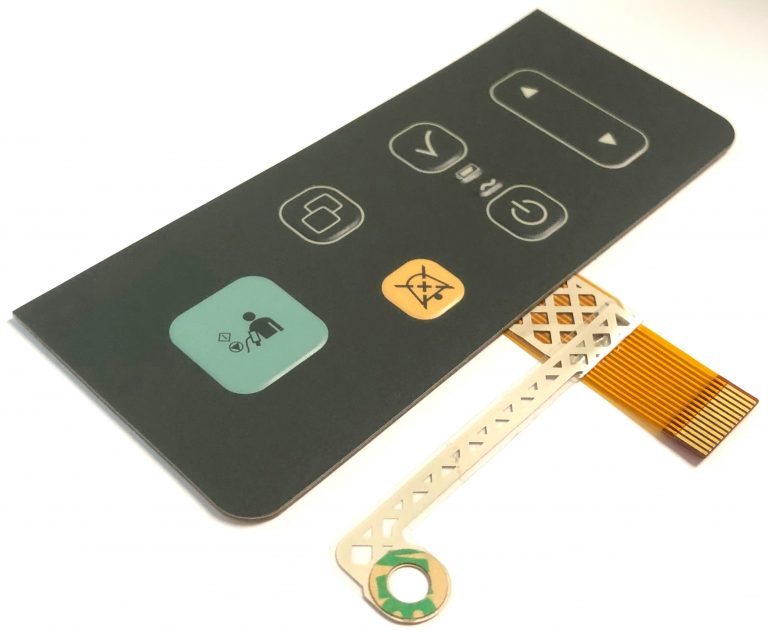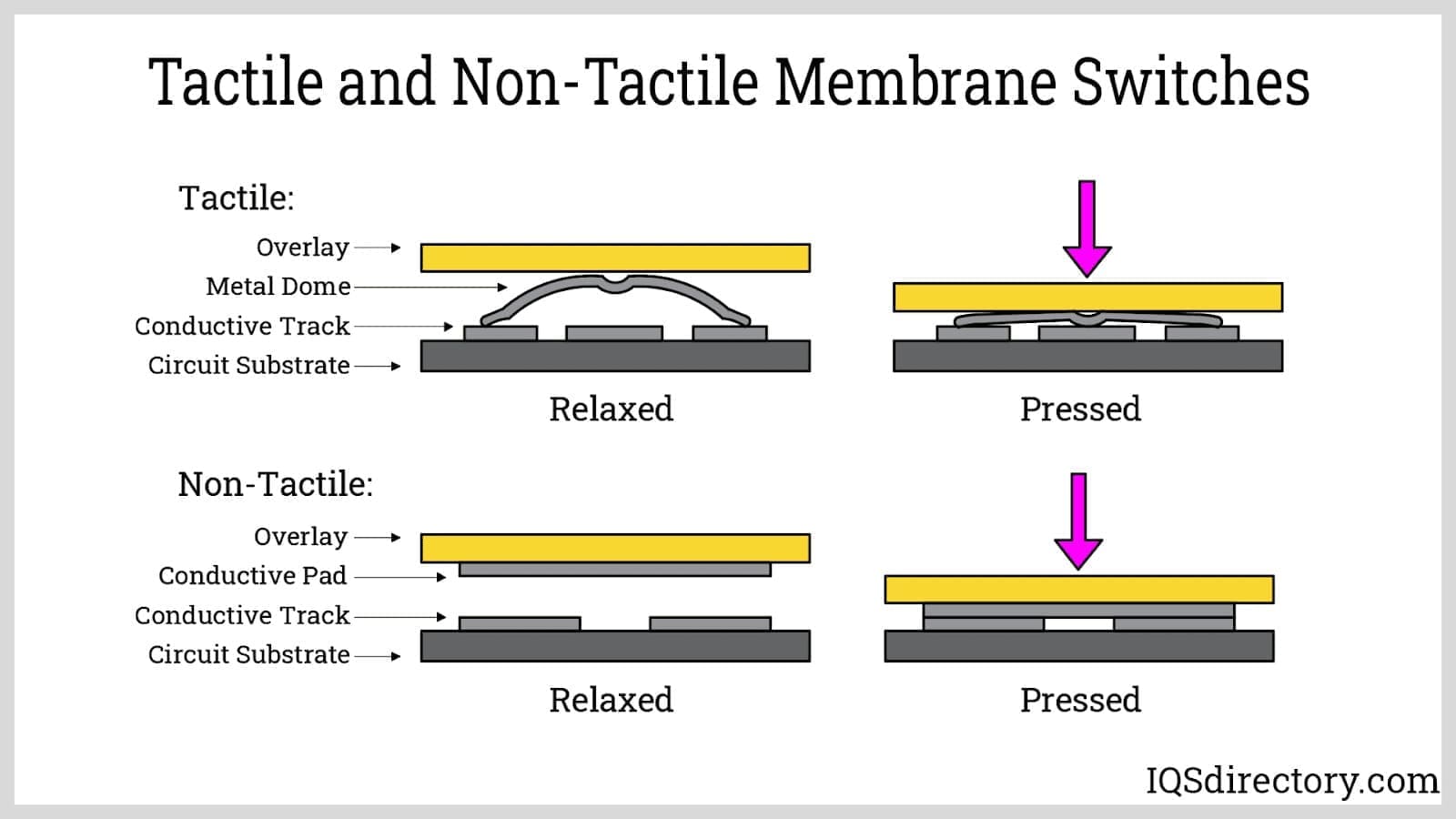The growing demand of membrane switch in aerospace engineering
Wiki Article
Understanding the Significance of Membrane Change in Modern Electronic Devices
Membrane layer switches are indispensable components in contemporary digital tools. They use a mix of performance and layout that improves individual communication. Their light-weight and sturdy nature makes them suitable for numerous applications. As sectors progress, the demand for customization and progressed attributes expands. Understanding how membrane layer changes add to innovation discloses their relevance in shaping the future of electronics. What exists ahead for this modern technology?The Fundamentals of Membrane Switch Modern Technology
Commonly ignored, membrane switch modern technology plays an important role in the contemporary electronic devices landscape. These tools, composed of numerous layers, work as customer interfaces for different digital products, ranging from family devices to clinical equipment. A regular membrane switch contains a visuals overlay, a spacer layer, and a circuit layer, which are thoroughly assembled to create a practical interface.When pressure is used to the overlay, the circuit layer is finished, allowing signals to be sent to the gadget. This innovation is known for its convenience, allowing modification in shape, functionality, and design to fulfill specific individual needs. In addition, membrane switches are lightweight and thin, making them suitable for applications where space is a costs. Their resilience and resistance to ecological factors further improve their allure, guaranteeing they can withstand rough problems while keeping functionality. In general, membrane switch innovation is indispensable to creating straightforward and reliable digital tools
Secret Advantages of Membrane Switches Over
Membrane changes offer numerous crucial advantages that make them a recommended choice in different electronic applications. Their layout permits for a portable kind aspect, allowing makers to produce light-weight and sleek devices. Furthermore, membrane layer switches are resistant to dirt, dampness, and chemicals, which boosts their longevity and long life in requiring settings. The tactile feedback given by these switches can improve customer experience, making them instinctive and very easy to operate.Furthermore, membrane buttons can be personalized with varied graphics and shades, permitting unique branding opportunities. The production process is usually economical, especially for high-volume manufacturing, as it reduces setting up time and streamlines style. Membrane layer switches over require very little upkeep, contributing to reduced total operational prices. These advantages emphasize their expanding popularity in contemporary electronic devices, where reliability and easy to use interfaces are crucial.
Applications Across Various Industries
The versatility of membrane layer switches over allows their widespread fostering across various markets. In the clinical field, they are typically utilized in analysis tools and patient monitoring systems, supplying a resilient interface immune to contaminants. The automotive sector makes use of membrane buttons for dashboard controls, enhancing customer experience with smooth layouts that stand up to rough problems. In customer electronics, they offer as control board for tools such as microwaves and coffee makers, providing an user-friendly interface that is very easy to clean. The aerospace industry utilizes membrane buttons in cabin controls, where reliability and area performance are paramount. In addition, the industrial market leverages these buttons in equipment and control systems to guarantee durable procedure popular environments. This broad series of applications underscores the flexibility of membrane buttons, making them indispensable components in enhancing performance and user interaction across diverse technical landscapes.Customization and Style Versatility

Future Patterns in Membrane Switch Growth
Arising patterns in membrane button advancement suggest a growing emphasis on enhanced performance and assimilation with clever technologies. As consumer need for much more advanced electronic devices rises, producers are concentrating on producing membrane changes that not only serve standard functional duties however likewise integrate functions like touch level of sensitivity, backlighting, and haptic feedback.Furthermore, improvements in products are expected to improve durability and environmental resistance, making membrane layer switches appropriate for varied applications in industries such as healthcare, automotive, and customer electronics. The combination of capacitive touch innovation is likely to come to be extra common, allowing for sleeker layouts and enhanced customer interfaces. membrane switch.Additionally, the surge of the Web of Points (IoT) is triggering the development of membrane layer changes that can communicate wirelessly with various other devices, go to this site boosting interconnectivity. In general, the future of membrane button technology appears promising, driven by advancement and the pursuit of straightforward solutionsRegularly Asked Concerns
Just How Do Membrane Switches Contrast to Conventional Mechanical Buttons?
Membrane switches, being much more space-efficient and offering a smooth layout, contrast with traditional mechanical buttons that offer responsive responses. The previous usually feature personalized graphics, while the latter usually assure toughness and reliability in different applications.What Products Are Frequently Used in Membrane Layer Switch Over Production?
Membrane switches are usually created utilizing products such as polyester, polycarbonate, and published conductive inks. These materials provide longevity, flexibility, and responsiveness, making them ideal for numerous applications in electronic devices and interface.Can Membrane Switches Be Repaired or Reused?
Membrane switches can frequently be repaired, particularly if small concerns arise, such as glue failing or surface area damages. Full reuse is normally limited due to put on and potential degradation of products over time.
How Do Ecological Factors Influence Membrane Layer Change Performance?
Ecological factors, such as temperature level, exposure, and humidity to chemicals, substantially affect membrane button efficiency. Severe problems can cause destruction, affecting responsiveness and longevity, eventually compromising the functionality of the gadget in various applications.What Is the Common Life-span of a Membrane Switch over?
The typical life expectancy of a membrane layer button typically ranges from 1 to 5 million actuations, relying on variables such as use regularity, ecological conditions, and the materials used in production, impacting toughness and performance long life. A typical membrane layer button is composed of a graphic overlay, a spacer layer, and a circuit layer, which are carefully constructed to develop a useful interface - membrane switch.When pressure is applied to the overlay, the circuit layer is finished, allowing signals to be sent to the gadget. The tactile comments provided by these buttons can boost customer experience, making them user-friendly and very easy to operate.Furthermore, membrane buttons can be personalized with diverse graphics and shades, allowing for unique branding possibilities. As customer demand for more advanced electronic gadgets boosts, producers are concentrating on producing membrane changes that not just offer fundamental operational functions however likewise include features like touch sensitivity, backlighting, and haptic feedback.Furthermore, advancements in products are expected to improve durability and ecological resistance, making membrane switches over suitable for diverse applications read this post here in industries such as health care, vehicle, and customer electronic devices. The assimilation of capacitive touch modern technology is most likely to become a lot more prevalent, enabling for sleeker designs and boosted individual interfaces.Additionally, the increase of the Net of Points (IoT) is triggering the development of membrane layer switches that can communicate wirelessly with various other gadgets, enhancing interconnectivity. Membrane layer switches, being a lot more space-efficient and supplying a sleek layout, contrast with typical mechanical buttons that give responsive responsesReport this wiki page